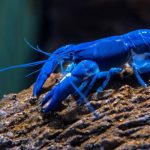Learning about sea lion reproduction helps us understand their role in the ocean. These social animals have special ways of mating linked to their body and the sea. We’ll look into their mating habits, body features, and how they care for their young.
Exploring these topics sheds light on when they breed and the key behaviors that help their species thrive. So, how do sea lions reproduce? Let’s dive in!
Understanding Sea Lion Sexual Maturity
Knowing when sea lions become sexually mature helps us understand their breeding habits. This maturity level is different for males and females. It affects their roles in mating.
Age of Maturity for Males and Females
Female sea lions become sexually mature around 3 years old. Males reach maturity at about 6 years but wait until they are 9 to 10 years old to mate. This delay helps them grow bigger and compete better for mates.
Factors Influencing Breeding Success
Many things affect sea lion breeding success. Social dynamics, like making breeding territories, are key for males. Being strong and healthy also helps them attract mates.
Sea lions are smart and social, leading to a lot of competition for mates. This often results in males having harems with 10 to 30 females. Things like the environment, health, and managing their territory also play a big role in their breeding success.
Sea Lion Mating Habits
Sea lions have fascinating mating habits that are key to their survival. During the breeding season, males show off their territory to attract females. This helps them secure mating chances. The timing of when females are ready to mate plays a big role in the sea lion breeding cycle.
Breeding Territories Established by Males
Male sea lions create territories on sandy beaches, often on the windward sides of islands. This happens from May to August, peaking in late June and July. They defend these areas to draw in females, leading to fierce battles with other males. This competition affects their chances of finding a mate during the sea lion breeding cycle.
Female Estrus Cycle After Giving Birth
After giving birth, female California sea lions start their estrus cycle in about three to four weeks. This means they can mate around 20 to 30 days after having a pup. This timing helps them reproduce quickly, ensuring the population stays healthy.
| Aspect | Details |
|---|---|
| Male Territorial Establishment | Occurs in late June and July |
| Breeding Season Duration | May to August |
| Female Estrus Cycle Timing | 3 to 4 weeks post-birth |
| Mating Post-Birth Timing | 20 to 30 days after giving birth |
How do sea lions reproduce?
The sea lion reproduction process is quite interesting. It shows how these marine mammals interact socially and physically. During mating, we see many behaviors that show their complex interactions. These behaviors help us understand how they reproduce.
Mating Process and Copulation
Copulation can happen on land or in the water and lasts from a few minutes to hours. Females often start mating with special behaviors, showing they’re ready. They use submissive postures to draw in males.
The mating act is not simple. Females can stop it by lifting their head and biting the male’s neck. This shows how important consent and communication are in mating.
Physical Behaviors During Breeding
During breeding, both males and females show important physical behaviors. Males use loud calls and postures to show they’re in charge and to attract females. Females respond with their own calls and postures to show they’re ready.
These behaviors are key to building strong social bonds in colonies. They help make sure the mating season is successful.
| Behavior Type | Description | Purpose |
|---|---|---|
| Courtship Displays | Males perform vocalizations and physical displays. | To attract females and establish dominance. |
| Submissive Postures | Females present themselves in a receptive manner. | To signal readiness for copulation. |
| Neck Biting | Females may bite males during mating. | To communicate discomfort or end the mating attempt. |
The Sea Lion Breeding Cycle
Sea lions have different breeding cycles, showing how they adapt to their environments. California sea lions have a special breeding season. This season is key for the survival of their pups. Understanding their breeding cycle helps us see how they succeed in their habitats.
Breeding Seasons in California Sea Lions
California sea lions breed from May to June. Males create territories to draw in females. After about 11 months of gestation, pups are born from June to August. This timing matches well with the best conditions for food, helping pups survive.
Variability Among Different Sea Lion Species
California sea lions breed at a specific time, but others don’t. For example, Galápagos sea lions breed when food is plentiful and the climate is right. This shows how sea lions adapt to different places to ensure their survival and success.

Reproductive Behaviors of Sea Lions
Sea lions have complex behaviors during the breeding season. Males compete fiercely for females. These behaviors show how they live and mate together. Let’s look at their courtship rituals and mating habits.
Courtship Rituals and Displays
Male California sea lions have special courtship rituals in the breeding season. They bark loudly to attract females and scare off other males. They also show off by puffing up or pretending to fight.
These rituals are key to their social life. They help decide who gets to mate and who doesn’t. It’s a way for the strongest males to show they’re the best.
Competition Among Males to Secure Mates
Male sea lions compete hard to be the top mate. They fight over their territory. Being big and strong helps them win.
They gather a group of females and show they’re the boss with loud barks and big displays. This shows how important being strong and smart is in sea lion society.
| Aspect | Description |
|---|---|
| Vocalizations | Barking to attract females and deter rivals. |
| Physical Displays | Puffing up, fighting, and other displays of strength. |
| Territorial Behavior | Establishing and defending breeding territories. |
| Hierarchy | Establishing social rankings based on displays and confrontations. |
Sea Lion Reproduction Process
The sea lion reproduction process is fascinating and crucial for their survival. Female sea lions have a gestation period of 8 to 11 months. They prepare for the arrival of their pups during this time.
Birthing usually happens on land. The newborn pups start nursing from their mothers right away. This creates a vital connection for their survival.
Gestation Period and Birth of Pups
During gestation, mothers go through big changes to support their developing pups. After birth, the bond between mothers and pups is key. Pups learn to recognize their mothers by their unique sounds in crowded colonies.
This bond is crucial right after birth. It affects the pup’s growth and success later on.
Mother-Pup Bonding and Care
Mothers stay on land with their pups for the first few weeks, keeping them safe and warm. This is important because young sea lions need to build up fat reserves before going into the water.
During this time, pups learn important survival skills. They also get the care they need to do well in the ocean. Learning about sea lion reproduction and maternal bonds helps us understand how these amazing animals thrive in the wild.
FAQ
How do sea lions reproduce?
Sea lions reproduce in a complex way. They start by setting up territories, mating, and taking care of their young. Males fight for the right to breed and gather harems of females during mating season.
What is the age of sexual maturity for male and female sea lions?
Female sea lions become ready to have sex at about 3 years old. Males are ready at 6 years old but usually wait until they are 9 to 10 years old to mate.
What factors influence the breeding success of sea lions?
Several things affect sea lion breeding success. These include making breeding territories, being strong, and social interactions among males fighting for mates.
How do male sea lions establish breeding territories?
Male sea lions create territories on beaches from May to August. They prefer spots on the windward sides of islands. The most active time is in late June and July.
When do female sea lions come into estrus after giving birth?
Female California sea lions start their estrus three to four weeks after giving birth. This means they can mate about 20 to 30 days after delivering their pups.
What is the process of mating and copulation among sea lions?
Sea lions mate both on land and in water. Copulation can last from a few minutes to several hours. Female sea lions often show submissive behaviors during courtship.
What are the primary breeding seasons for California sea lions?
California sea lions breed mainly from May to June. They have a 11-month gestation period, resulting in births from June to August.
Is there variability in breeding cycles among different sea lion species?
Yes, different sea lion species have their own breeding times and cycles. These vary to fit their environments and improve their chances of reproducing successfully.
What are the courtship rituals and displays of sea lions?
Male sea lions use vocalizations and physical displays to draw in females and show dominance over other males. These actions are key to setting up territories and getting mates.
How long is the gestation period for sea lions and what happens after birth?
Sea lion gestation lasts from 8 to 11 months. After birth, pups start nursing right away. The mother stays with them on land until they have enough fat to survive on their own.
What is the role of the mother-pup bond in sea lion reproduction?
The bond between mother and pup is vital for survival. Pups learn to recognize their mothers’ calls and depend on them for care in their early weeks.







